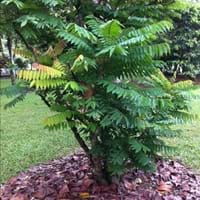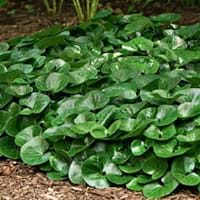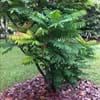Life Span
Perennial
Annual and Perennial
Type
Flowering Plants, Herbs
Broadleaf Evergreen
Origin
Hybrid origin
Western Europe
Types
Not Available
Not Available
Number of Varieties
Not Available
Habitat
moist forests, Mountains
gardens, Lake Sides, Marshy ground, shade of upland trees, Shaded sites, Subtropical climates
USDA Hardiness Zone
4-9
4-8
AHS Heat Zone
9-2
Not Available
Sunset Zone
1a, 1b, 2a, 2b, 3a, 3b, 4, 5, 6, 7, 8, 9, 10, 11, 12, 13, 14, 15, 16, 17, 18, 19, 20
Not Available
Habit
Clump-Forming
Spreading
Flower Color
Purple, Pink, Lavender
Green, Purple, Brown
Flower Color Modifier
Bicolor
Bicolor
Fruit Color
Brown
Not Available
Leaf Color in Spring
Green
Dark Green
Leaf Color in Summer
Green
Dark Green
Leaf Color in Fall
Green
Dark Green
Leaf Color in Winter
Green
Dark Green
Leaf Shape
Pinnate
Cushion
Plant Season
Spring, Summer
Spring, Summer, Fall, Winter
Sunlight
Full Sun
Partial shade, Full Shade
Type of Soil
Clay, Loam, Sand
Loam
The pH of Soil
Acidic, Neutral, Alkaline
Acidic, Neutral
Soil Drainage
Well drained
Well drained
Bloom Time
Late Spring, Summer
Late Spring
Tolerances
Drought, Salt
Not Available
Where to Plant?
Ground
Container, Ground
How to Plant?
Cuttings, Seedlings
Divison, Rhizome division
Plant Maintenance
Medium
Low
Watering Requirements
Needs very little water
Average Water Needs
In Summer
Lots of watering
Average Water
In Spring
Moderate
Moderate
In Winter
Average Water
Average Water
Soil pH
Acidic, Neutral, Alkaline
Acidic, Neutral
Soil Type
Clay, Loam, Sand
Loam
Soil Drainage Capacity
Well drained
Well drained
Sun Exposure
Full Sun
Partial shade, Full Shade
Pruning
cut main trunk every 5 years, Prune after flowering, Prune central stem, Remove damaged leaves, Remove dead branches, Remove dead leaves
Don't prune in winter, Prune in spring, Remove dead branches, Remove dead leaves
Fertilizers
All-Purpose Liquid Fertilizer, Apply 5-10-5 amounts, Compost
All-Purpose Liquid Fertilizer
Pests and Diseases
Nematodes, Red blotch, Trunk Rot
Ants, Slugs, Snails
Plant Tolerance
Drought
Not Available
Flowers
Showy
Insignificant
Flower Petal Number
Single
Not Available
Foliage Texture
Medium
Medium
Foliage Sheen
Glossy
Glossy
Attracts
Butterflies, Leaf Hoppers
Insects
Allergy
Itchiness, Not Available, Sore Throat
no allergic reactions
Aesthetic Uses
Beautification
Showy Purposes
Beauty Benefits
Anti-ageing, Good Cleanser, Remove blemishes, Removes pimples
No Beauty Benefits
Environmental Uses
Air purification, Food for animals, Food for birds, soil stabilisation
Air purification
Medicinal Uses
Cough, Haemorrhages, Laxative, Obesity, Tonic
Ear ache, Fever, Heart problems, Menstrual Disorders, Snakebite
Part of Plant Used
Fruits, Leaves
Whole plant
Other Uses
Added to salads, Can be boiled and seasoned, pickled, Culinary use
Not Available, Used in making tooth powder
Used As Indoor Plant
No
No
Used As Outdoor Plant
Yes
Yes
Garden Design
Container, Cutflower, Mixed Border, Rock Garden / Wall, Wildflower
Edging, Groundcover
Botanical Name
Averrhoa bilimbi
ASARUM europaeum
Common Name
Bilimbi, Mimbro
European Wild Ginger
In Hindi
Bilimbi
यूरोपीय जंगली अदरक
In German
bilimbi
Europäische Wild Ginger
In French
bilimbi
Wild Ginger européenne
In Spanish
bilimbi
Wild Ginger Europea
In Greek
bilimbi
Ευρωπαϊκή Wild Ginger
In Portuguese
bilimbi
Wild Ginger Europeia
In Polish
bilimbi
Kopytnik pospolity
In Latin
Rondo Beardtongue
Gingiberi Europae Wild
Phylum
Magnoliophyta
Magnoliophyta
Class
Magnoliopsida
Magnoliopsida
Order
Oxalidales
Piperales
Family
Oxalidaceae
Aristolochiaceae
Clade
Angiosperms, Eudicots, Rosids
Angiosperms, Magnoliids
Tribe
Not Available
Not Available
Subfamily
Not Available
Not Available
Number of Species
Not Available
Properties of Bilimbi and European Wild Ginger
Wondering what are the properties of Bilimbi and European Wild Ginger? We provide you with everything About Bilimbi and European Wild Ginger. Bilimbi doesn't have thorns and European Wild Ginger doesn't have thorns. Also Bilimbi does not have fragrant flowers. Bilimbi has allergic reactions like Itchiness, Not Available and Sore Throat and European Wild Ginger has allergic reactions like Itchiness, Not Available and Sore Throat. Compare all the properties and characteristics of these two plants. Find out which of these plant can be used as indoor plant. If you are interested to decorate your house and garden, find out aesthetic uses, compare them and select the plant which will beautify your surrounding. Along with beautification, try comparing medicinal and edible uses of Bilimbi and European Wild Ginger and you can choose the plant having best and most benefits.
Season and Care of Bilimbi and European Wild Ginger
Season and care of Bilimbi and European Wild Ginger is important to know. While considering everything about Bilimbi and European Wild Ginger Care, growing season is an essential factor. Bilimbi season is Spring and Summer and European Wild Ginger season is Spring and Summer. The type of soil for Bilimbi is Clay, Loam, Sand and for European Wild Ginger is Loam while the PH of soil for Bilimbi is Acidic, Neutral, Alkaline and for European Wild Ginger is Acidic, Neutral.
Bilimbi and European Wild Ginger Physical Information
Bilimbi and European Wild Ginger physical information is very important for comparison. Bilimbi height is 38.10 cm and width 25.40 cm whereas European Wild Ginger height is 6.35 cm and width 27.30 cm. The color specification of Bilimbi and European Wild Ginger are as follows:
Bilimbi flower color: Purple, Pink and Lavender
Bilimbi leaf color: Green
European Wild Ginger flower color: Green, Purple and Brown
- European Wild Ginger leaf color: Dark Green
Care of Bilimbi and European Wild Ginger
Care of Bilimbi and European Wild Ginger include pruning, fertilizers, watering etc. Bilimbi pruning is done cut main trunk every 5 years, Prune after flowering, Prune central stem, Remove damaged leaves, Remove dead branches and Remove dead leaves and European Wild Ginger pruning is done Don't prune in winter, Prune in spring, Remove dead branches and Remove dead leaves. In summer Bilimbi needs Lots of watering and in winter, it needs Average Water. Whereas, in summer European Wild Ginger needs Average Water and in winter, it needs Average Water.





